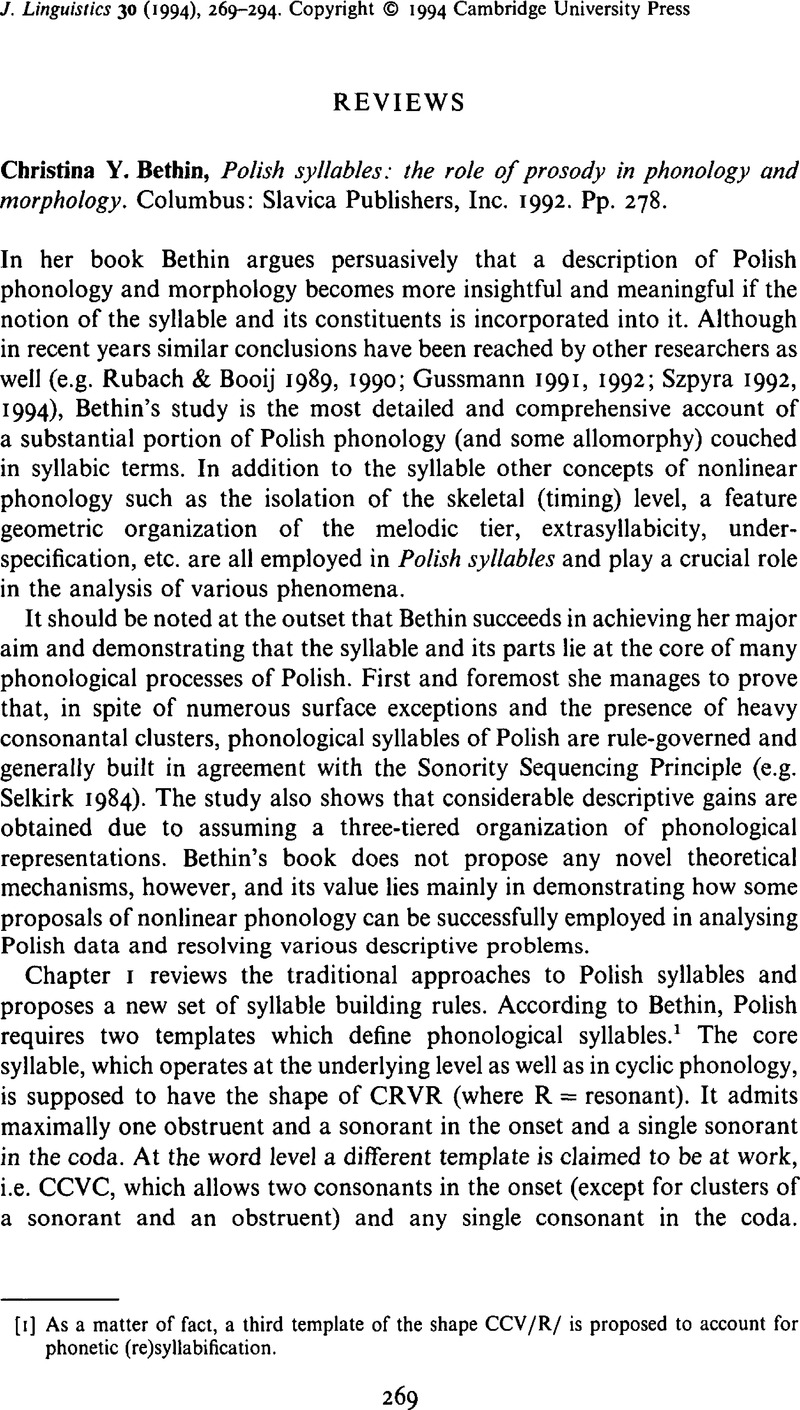No CrossRef data available.
Article contents
Christina Y. Bethin, Polish syllables: the role of prosody in phonology and morphology. Columbus: Slavica Publishers, Inc.1992. Pp. 278.
Review products
Christina Y. Bethin, Polish syllables: the role of prosody in phonology and morphology. Columbus: Slavica Publishers, Inc.1992. Pp. 278.
Published online by Cambridge University Press: 28 November 2008
Abstract
An abstract is not available for this content so a preview has been provided. Please use the Get access link above for information on how to access this content.

- Type
- Reviews
- Information
- Copyright
- Copyright © Cambridge University Press 1994
References
Gussmann, E. (1991). Polish syllable structure: a hypothesis and its problems. In Grochowski, M. & Weiss, D. (eds.) Words are physicians for an ailing mind. München: Sagner. 207–213.Google Scholar
Gussmann, E. (1992). Resyllabification and delinking: the case of Polish voicing. Linguistic Inquiry 23. 29–56.Google Scholar
Mascaro, J. (1988). A reduction and spreading theory of voicing and other sound effects. Ms., Universitat Autonoma de Barcelona.Google Scholar
Rubach, J. & Booij, G. (1989). Syllable structure assignment in Polish. Phonology 7. 121–158.CrossRefGoogle Scholar
Rubach, J. & Booij, G. (1990). Edge of constituent effects in Polish. Natural Language and Linguistic Theory 8. 427–463.CrossRefGoogle Scholar
Selkirk, E. (1984). On the major class features and syllable theory. In Aronoff, M. & Oehrle, R. (eds.) Language sound structure. Cambridge, MA: MIT Press. 107–136.Google Scholar
Szpyra, J. (1992). Ghost segments in nonlinear phonology: Polish yers. Language 68. 277–312.CrossRefGoogle Scholar
Szpyra, J. (1994). The formation of hypocoristics and syllable structure in Polish. In Jaworski, A. & Staczek, J. (eds.) Contemporary studies in Polish linguistics. Georgetown: Georgetown University Press (in press).Google Scholar


